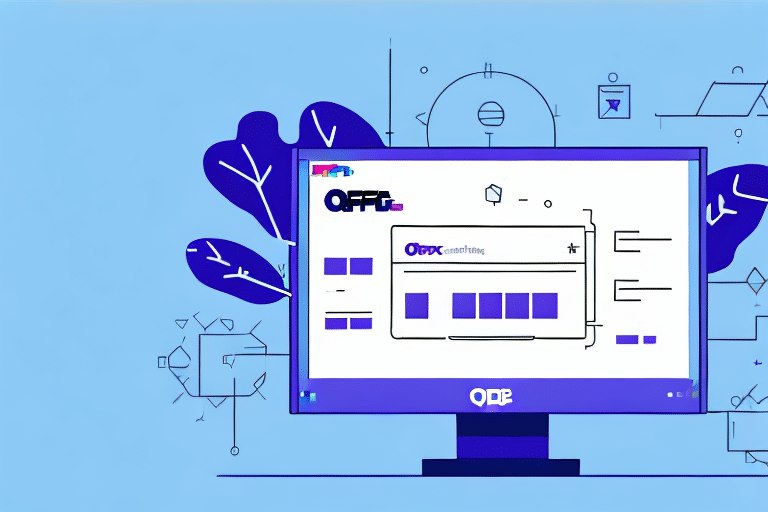Accessing FedEx Ship Manager with SQL Anywhere via ODBC: A Comprehensive Guide
Streamlining business operations by integrating FedEx Ship Manager with SQL Anywhere using ODBC can significantly enhance your shipping processes. This guide provides an in-depth analysis of how to access FedEx Ship Manager with SQL Anywhere through ODBC, offering detailed steps, benefits, and troubleshooting tips to ensure a seamless setup and operation.
Understanding FedEx Ship Manager
FedEx Ship Manager is a robust tool designed to help businesses efficiently manage their shipping operations. It allows users to process shipments, print shipping labels, and track packages in real-time from a centralized platform. As a web-based solution, FedEx Ship Manager offers the flexibility to access shipping data from any location, making it ideal for businesses with multiple sites or remote teams.
FedEx Ship Manager integrates various features to automate and optimize shipping tasks, reducing manual effort and minimizing errors. Key functionalities include batch shipping, rate calculators, address validation, and comprehensive tracking capabilities. Understanding these features is crucial for maximizing the platform's potential.
For more detailed information on FedEx Ship Manager's capabilities, refer to the official FedEx Ship Manager page.
Role of SQL Anywhere in Managing Shipping Data
SQL Anywhere is a powerful relational database management system that FedEx Ship Manager utilizes to store and manage shipment data. This database system facilitates efficient data retrieval, reporting, and analytics, enabling businesses to make informed decisions about their shipping operations.
With SQL Anywhere, businesses can:
- Search and Retrieve Data: Quickly access shipment information using SQL queries.
- Generate Reports: Create detailed reports on shipping activities, such as delivery times and costs.
- Analyze Trends: Use analytics to identify patterns and optimize shipping processes for better efficiency and cost savings.
Leveraging SQL Anywhere's capabilities in conjunction with FedEx Ship Manager enhances data management and operational insights, contributing to more effective shipping strategies.
Connecting FedEx Ship Manager with SQL Anywhere via ODBC
Open Database Connectivity (ODBC) serves as a bridge between FedEx Ship Manager and SQL Anywhere, enabling seamless data exchange and integration. By establishing an ODBC connection, businesses can automate data workflows, streamline operations, and enhance the reliability of their shipping processes.
The advantages of using ODBC include:
- Ease of Integration: Simplifies the connection between different software systems.
- Scalability: Supports large databases, accommodating business growth.
- Security: Offers robust security features to protect sensitive shipping data.
- Compatibility: Works with a wide range of platforms and applications, ensuring flexibility in diverse IT environments.
Automating shipping tasks through ODBC can lead to significant time savings and reduce the likelihood of human error, thereby improving overall operational efficiency.
Setting Up ODBC Data Sources for FedEx Ship Manager
Configuring ODBC data sources is a critical step in connecting FedEx Ship Manager with SQL Anywhere. Follow these steps to ensure a successful setup:
- Open the ODBC Data Source Administrator tool on your computer.
- Click the "Add" button to create a new data source.
- Select the appropriate driver for FedEx Ship Manager.
- Enter your FedEx Ship Manager username and password.
- Save the new data source configuration.
Note: If you're using a 64-bit version of Windows, ensure that you set up the data sources using the 32-bit ODBC Data Source Administrator found in the "SysWOW64" folder within the Windows directory.
For detailed guidance on ODBC setup, refer to Microsoft's official documentation.
Configuring SQL Anywhere to Connect with FedEx Ship Manager
Once the ODBC data sources are configured, the next step is to set up SQL Anywhere to communicate with FedEx Ship Manager:
- Create a New Database Connection: Use SQL Anywhere tools to establish a new connection.
- Configure Server Details: Enter the database server name and port number.
- Enter Credentials: Provide the ODBC data source name along with your FedEx Ship Manager username and password.
- Test the Connection: Verify that SQL Anywhere can successfully connect to FedEx Ship Manager.
Successful configuration allows SQL Anywhere to automate tasks such as generating shipping labels, tracking packages, and managing shipping data. This integration provides valuable insights through advanced reporting and analytics, helping businesses optimize their shipping strategies.
Authenticating User Credentials
Ensuring secure authentication of user credentials is paramount when accessing FedEx Ship Manager with SQL Anywhere and ODBC. Follow these steps to authenticate properly:
- Verify that you have a valid FedEx Ship Manager user account.
- Ensure that your ODBC data sources are correctly configured.
- Input your credentials into the SQL statements accurately.
- Execute the SQL statements and confirm successful authentication.
In case of authentication issues, check that your user account has the necessary permissions and that your ODBC drivers are up to date. Refer to FedEx's technical support for additional assistance.
Troubleshooting Common Issues
While integrating FedEx Ship Manager with SQL Anywhere via ODBC offers numerous benefits, businesses may encounter some challenges:
- Connection Problems: Issues with ODBC data sources or SQL Anywhere configuration can prevent successful connections.
- Data Synchronization: Inconsistent data storage or synchronization issues can disrupt operations.
- Authentication Errors: Incorrect user credentials or outdated drivers may lead to failed authentication.
- Printing Issues: Problems with printer settings or drivers can hinder label printing.
- Performance Lags: Slow system performance may result from insufficient resources or network issues.
To effectively troubleshoot these problems:
- Identify the root cause by reviewing error messages and system logs.
- Isolate and test individual components of the system.
- Reconfigure or update affected components as necessary.
For persistent issues, consulting with IT professionals or seeking support from FedEx can provide targeted solutions.
Best Practices for Maximizing Efficiency
To fully leverage the integration of FedEx Ship Manager with SQL Anywhere and ODBC, adhere to the following best practices:
- Regular Updates: Keep all software components up to date to benefit from the latest features and security patches.
- Data Backups: Implement regular backups to safeguard against data loss.
- Strong Security: Use robust passwords and security protocols to protect sensitive shipping data.
- System Monitoring: Continuously monitor system performance and logs to detect and address issues promptly.
- Employee Training: Educate staff on using FedEx Ship Manager and SQL Anywhere effectively to enhance productivity.
By following these best practices, businesses can ensure the reliability and efficiency of their shipping operations, leading to improved customer satisfaction and cost savings.
Conclusion
Integrating FedEx Ship Manager with SQL Anywhere via ODBC presents a powerful solution for businesses aiming to optimize their shipping processes. By following the steps outlined in this guide and adhering to best practices, organizations can enhance operational efficiency, gain valuable insights through data analytics, and deliver superior service to their customers. Begin leveraging the full potential of this integration today to drive your business forward.
For additional resources and support, visit the FedEx Shipping Tools page or consult with your IT team to ensure a smooth and effective implementation.






















